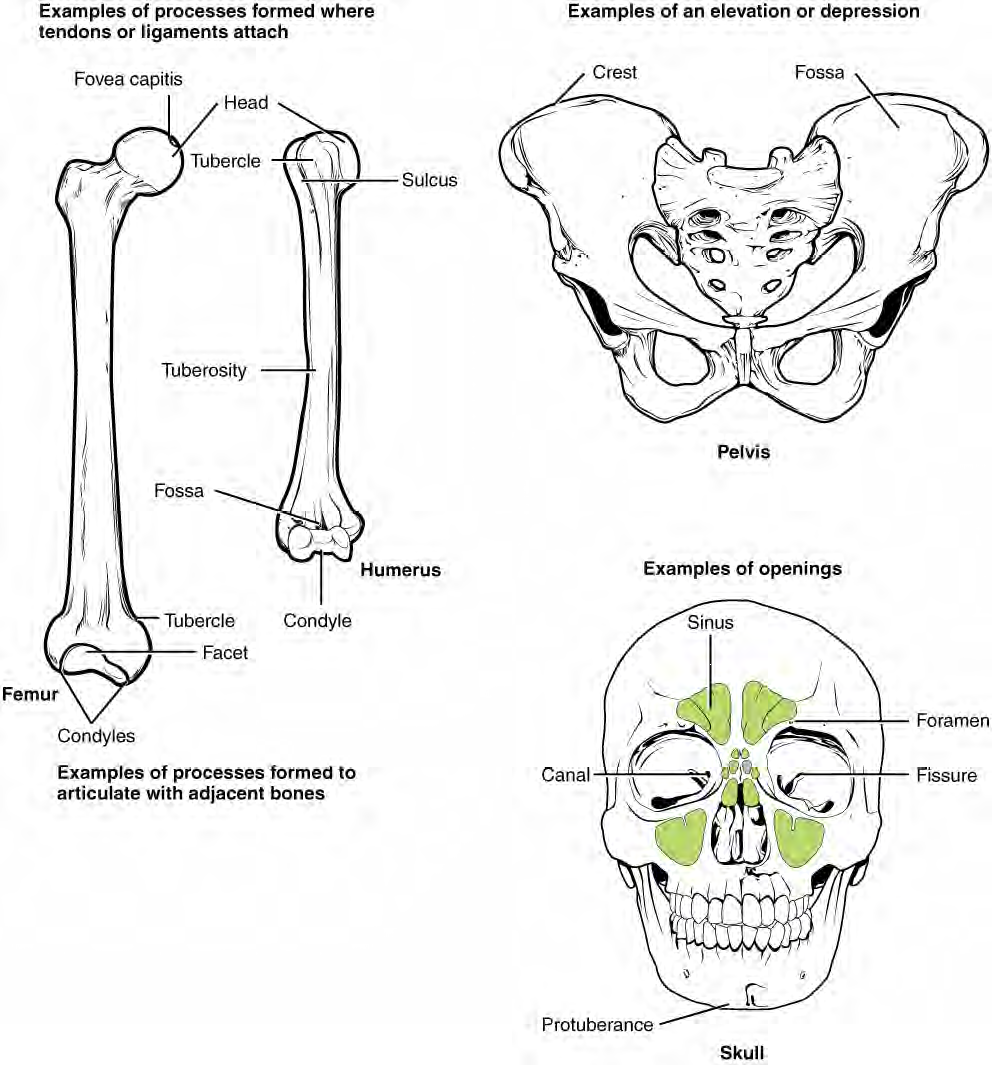Bone Markings
The surfaces of bones have various bone markings for attachments of tendons or for articulations to other bones (Figure 7). These will vary depending on location and function of the bone marking. Bone markings fall into two general categories: projections and depressions. A projection is an area of a bone that projects above the surface of the bone, which often articulates with a bone depression on a facing bone. Other projections will hold tendons and ligaments. Depressions and openings allow blood vessels and nerves to enter the bone, or allow an articulation with another bone. On your own, fill in a table like the one below of the primary markings.
| Marking | Description | Example |
|---|---|---|
|
Head |
Prominent, rounded surface at the end of a bone |
Blank |
|
Condyle |
Smooth rounded surface for an articulation |
Blank |
|
Spine |
Sharp process |
Blank |
|
Tubercle |
Small, rounded process |
Blank |
|
Tuberosity |
Rough surface where a tendon attaches |
Blank |
|
Trochanter |
Large rounded process for muscle attachment on the femur |
Blank |
|
Crest |
Ridge |
Blank |
|
Process |
Prominent feature emerging from a bone |
Blank |
|
Foramen |
Hole through a bone |
Blank |
|
Fossa |
Elongated basin |
Blank |
|
Fovea |
Small pit |
Blank |
|
Fissure |
Slit through a bone |
Blank |
|
Meatus |
Opening into a canal |
Blank |
|
Sinus |
Air-filled space in a bone |
Blank |
Download the Table 2 Bone Markings Sudent Table PDF file.

Figure 7. Bone Markings. The general bone markings include processes that extend from the bone in various ways and depressions which are indented into the bone or form holes (foramen). The examples of processes here include the head, tubercle, tuberosity, condyle, protuberance and crest. The examples of depressions include fossa, canal, fissure, and a hole or foramen.
CC BY: OpenStax College

